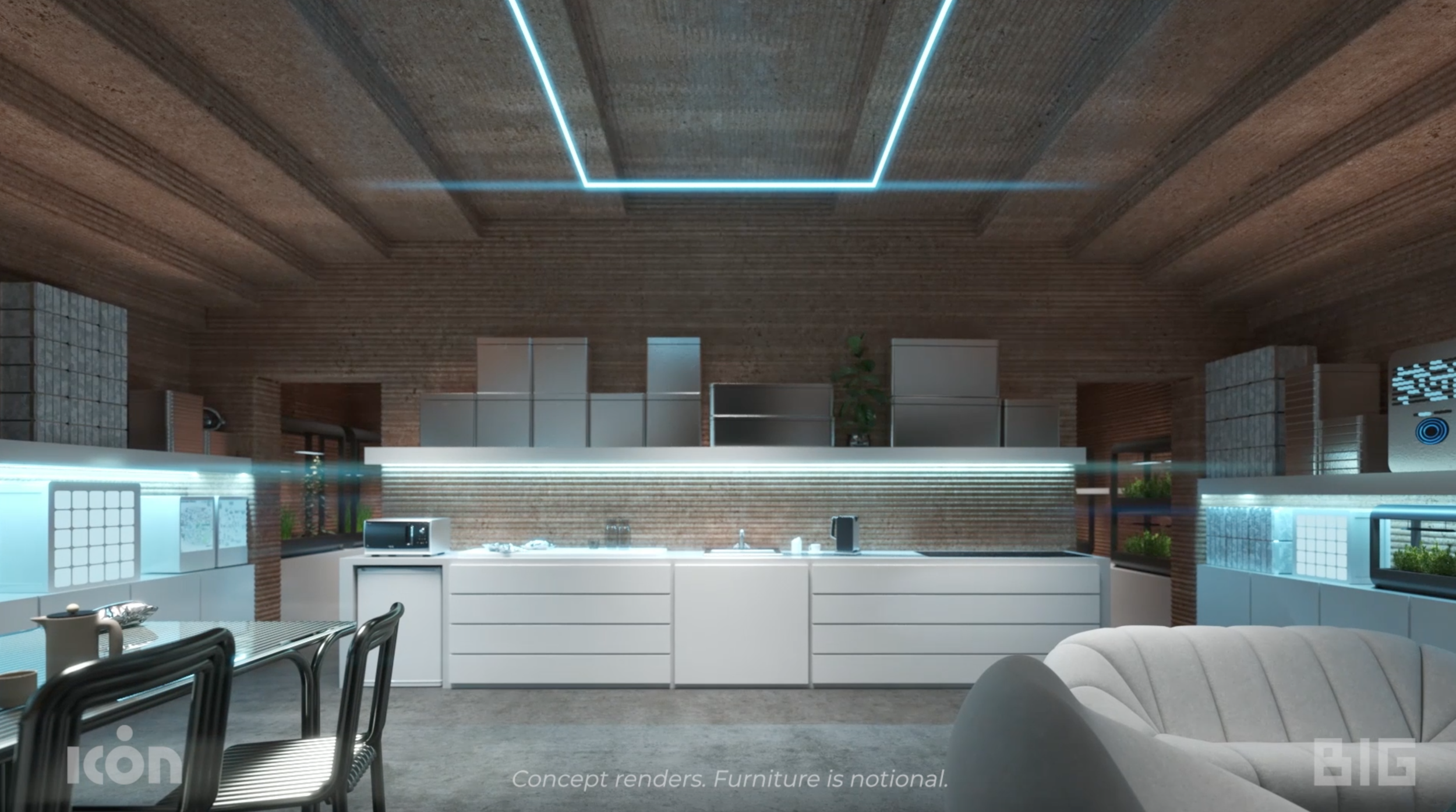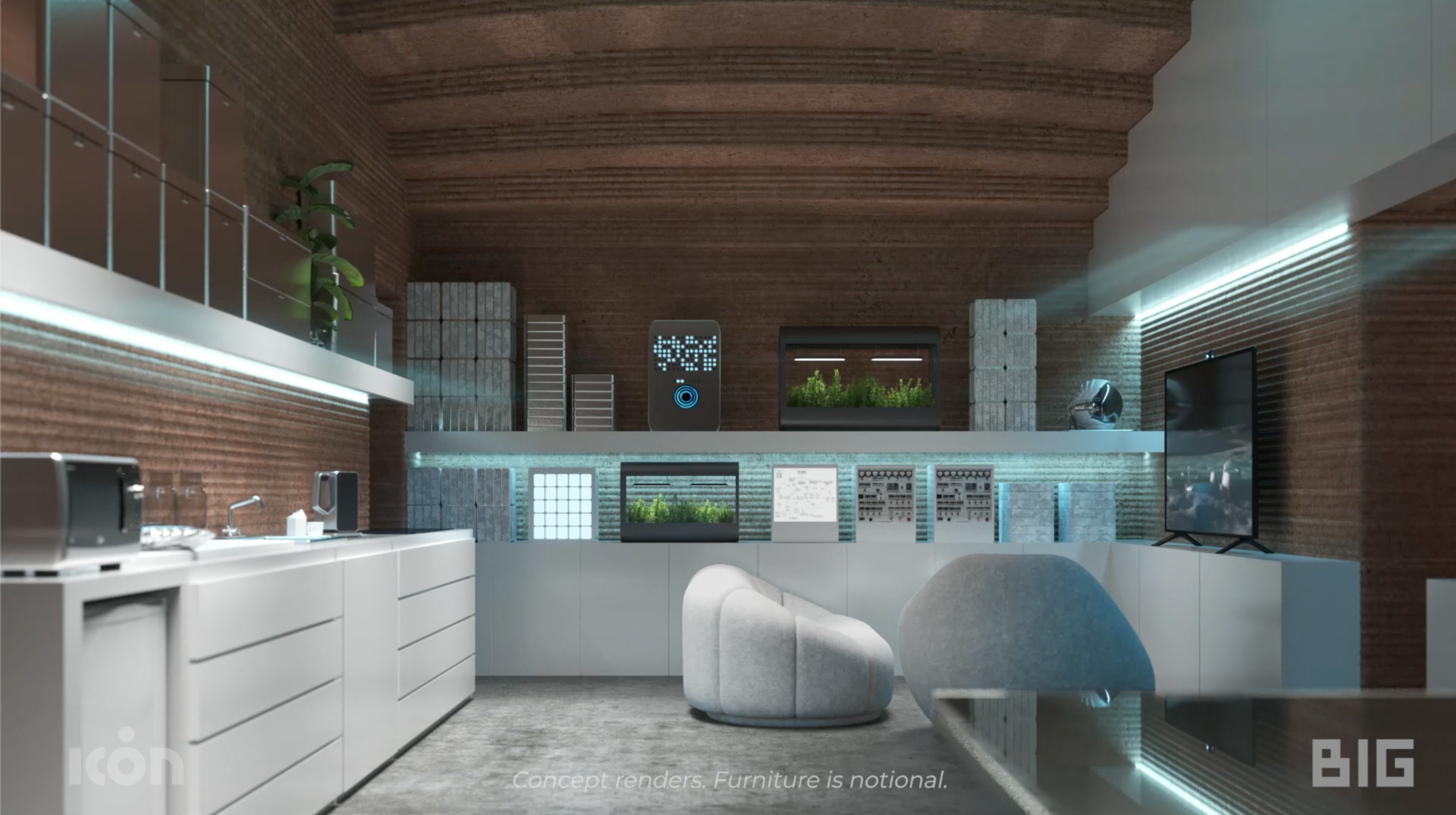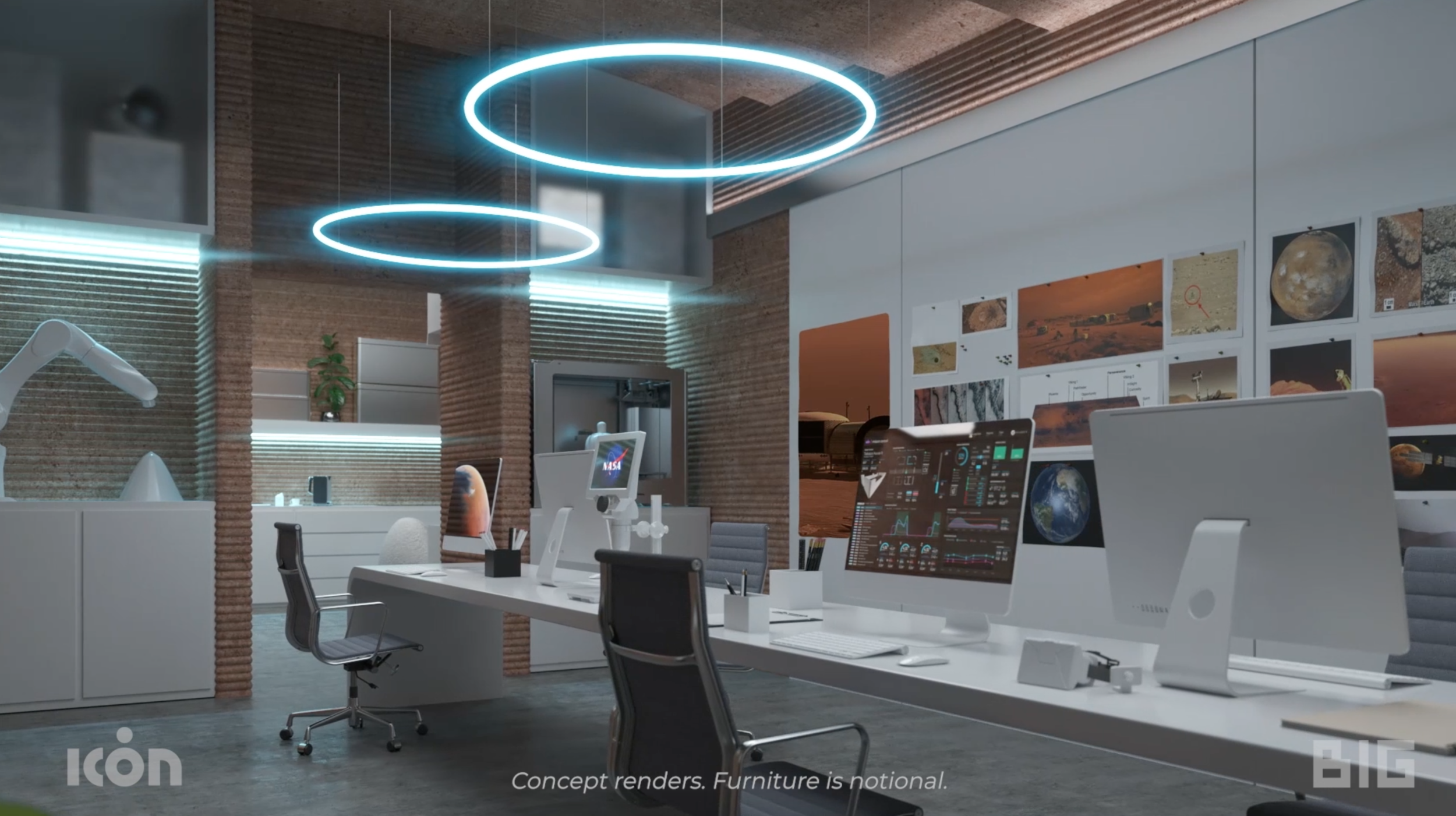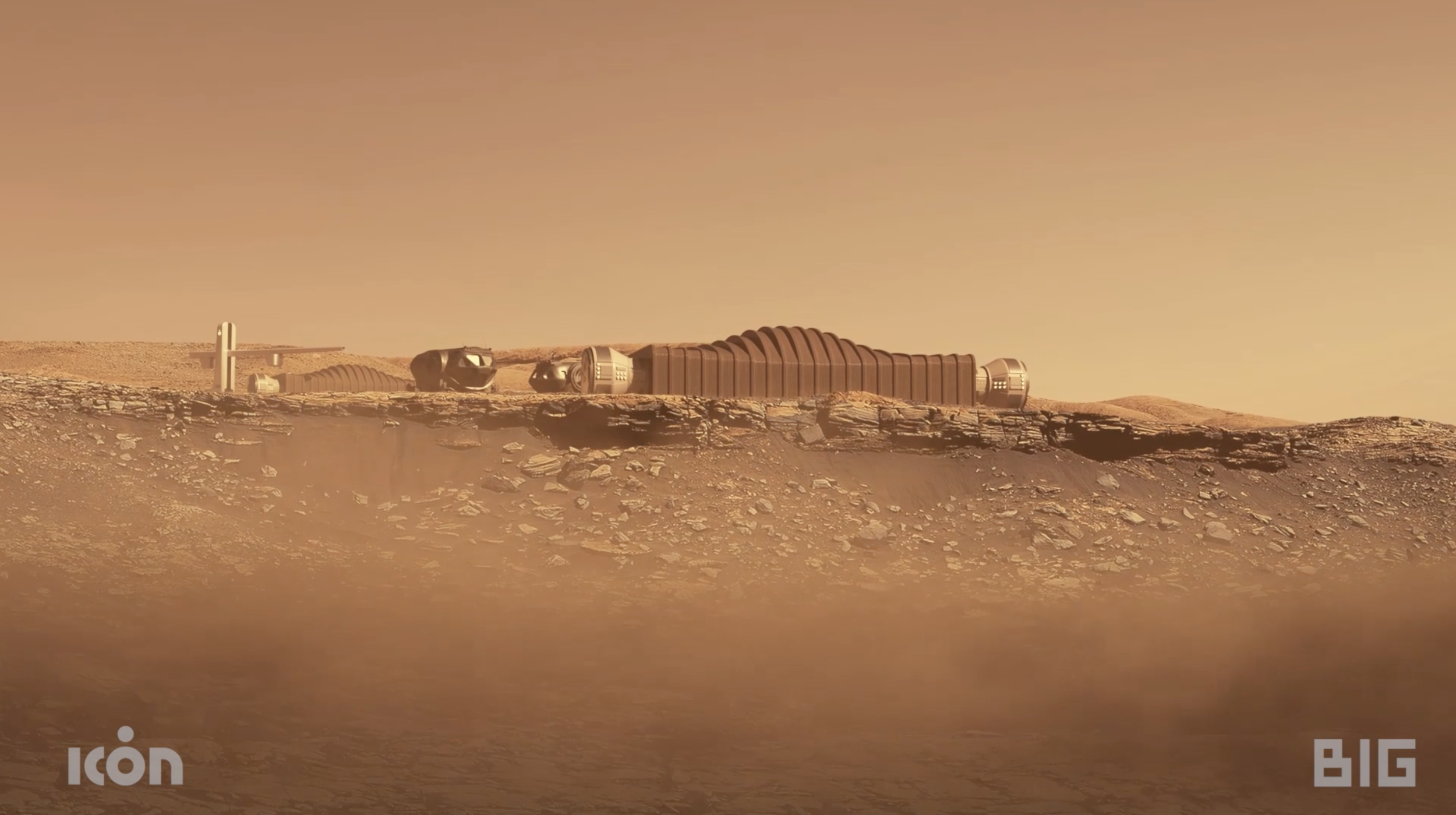Crew Health and Performance Exploration Analog (CHAPEA):
Construction of Mars Dune Alpha
In 2020 ICON Technology, Inc. was awarded a subcontract through Jacobs supporting the Crew Health and Performance Exploration Analog (CHAPEA) to deliver a 3D-printed habitat, known as Mars Dune Alpha, at the Johnson Space Center in Houston. ICON utilized the Vulcan construction system to complete a 1,700 square-foot structure, designed by architecture firm BIG (Bjarke Ingels Group), that will simulate a realistic Mars habitat supporting long-duration, exploration-class space missions. This project was completed as part of NASA’S Human Exploration and Operations Mission Directorate (HEOMD) and the one-year long analog missions are anticipated to begin in Fall 2022.
The project team included Calvin Glasgow and Michael Gauthier as Principle Project Managers, Bungane Mehlomakulu as MEP and Building Science Manager, Caleb Mann as Director of Build Operations, Jason Ballard as CEO of ICON, myself as Director of Architecture, as well as many other ICON team members. The architect of record was Bjarke Ingels Group and the project team included Lead Architects Julian Ocampo Salazar and Stephanie Mauer. The engineer of record was Fort Structures.
Description
The layout of the structure synthesized NASA requirements for functional habitat programs and was organized in a gradient of privacy. The habitat includes four private crew quarters, dedicated workstations, a medical station, food-growing stations, with shared recreation and living spaces in between. As a functional analog habitat, Mars Dune advances the technology readiness of multiple technology gaps relevant to additive construction for pressurized surface habitats. Among these include: the integration of Earth-brought elements such as airlocks, hatches, and a medical pass-through window, as well as the integration of modular flooring and outfitting elements for the habitat interior.








